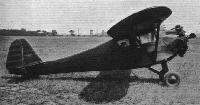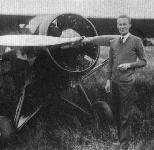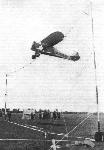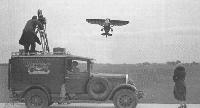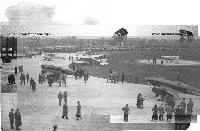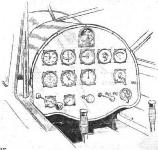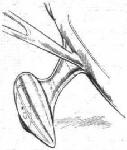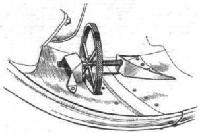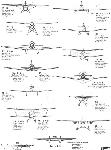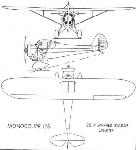
Варианты
- Central States - Monocoupe 22 - 1927 - США
- Monocoupe - 90 / 110 / 145 - 1930 - США
Monocoupe
<...>
Следующий самолет - Monosport Model 1 - оснащался семицилиндровым двигателем Warner Scarab мощностью 110 л. с. и предназначался для авиагонок. Одновременно с ним появился Monosport Model 2 со звездообразным двигателем Kinner К-5 мощностью 100 л. с. В 1930 году компания "Mono" выпустила модель Monocoupe 90 с улучшенными обводами и несколько удлиненным и более широким фюзеляжем, которая продавалась в следующих вариантах: Monocoupe 90A со звездообразным двигателем Lambert R-266 мощностью 90 л. с.; Monocoupe 90 DeLuxe с таким же двигателем, но с закрылками, обтекателями колес шасси и модифицированным капотом; Monocoupe 90AF и Monocoupe 90AL с двигателями Franklin и Avco Lycoming соответственно мощностью 115 л. с. В 1930 году появились еще три модификации: Monocoupe 90-J с двигателем Warner Scarab Jr мощностью 90 л. с.; Monocoupe 110 с двигателем Warner Scarab мощностью 110 л. с. и Monocoupe 125 с двигателем Kinner B-5 мощностью 125 л. с. Депрессивное состояние экономики в стране привело к появлению в 1932 году самолета Monocoupe Model 70-V с вновь установленным маломощным (65 л. с.) двигателем Velie M-5, который обеспечивал уменьшение эксплуатационных затрат, но за счет снижения летных характеристик. Последним представителем семейства двухместных самолетов стал построенный в 1934 году Monocoupe D-145 с хорошими летными характеристиками, несколько увеличенной кабиной и двигателем Warner Super Scarab мощностью 145 л. с. Точное количество выпущенных самолетов Monocoupe неизвестно, по ряду данных, оно составило более 1000 экземпляров.
Пытаясь приспособиться к другому сегменту рынка, компания "Mono" в 1928 году облетала несколько увеличенный четырехместный самолет Monocoach, в целом схожий с Monocoupe и вначале оснащавшийся двигателем Velie L-9 мощностью 185 л. с. Впрочем, двигатель оказался неэффективным, и его заменили на звездообразный девятицилиндровый Wright J-5 мощностью 220 л. с. В следующем году появился усовершенствованный его вариант, который отличался лишь более легким семицилиндровым двигателем Wright J-6 мощностью 225 л. с., что позволило увеличить массу полезной нагрузки на 20 кг. Спрос на четырехместный вариант оказался небольшим, поэтому вскоре после появления двухместного Monocoupe D-145 деятельность компании "Mono Aircraft Corporation" прекратилась.
ТАКТИКО-ТЕХНИЧЕСКИЕ ХАРАКТЕРИСТИКИ
Monocoupe Model 110
Тип: двухместный моноплан
Силовая установка: один семицилиндровый звездообразный ПД Warner Scarab мощностью 110 л. с. (82 кВт)
Летные характеристики: максимальная скорость 214 км/ч: практический потолок 4875 м; дальность 724 км
Масса: пустого 450 кг; максимальная взлетная 731 кг
Размеры: размах крыла 9,75 м; длина 6,20 м; высота 2,11 м; площадь крыла 12,26 м!
Описание:
- Monocoupe
- Flight, January 1935
AMERICAN MONOCOUPE RANGE
Фотографии
-
Авиация и Космонавтика 2013-10 / В.Морозов - Великая воздушная гонка
Регистрационный номер: NC50W [4] Американский Ламберт "Монокупе" 145
-
Мировая Авиация 197
Регистрационный номер: N36Y Этот Monocoupe 110 был построен в 1941 году, а в 2001 году он принадлежал частному владельцу в Фейрфаксе, штат Вирджиния.
-
Air International 1985-10 / ??? - Watsonville Comes of Age /Veteran & Vintage/
A Monocoupe 110 powered by a 125 hp Warner engine and restored by Ted and Betty Hendrickson of Snohomish, near Seattle.
-
Aeroplane Monthly 1983-09 / P.Capon - Capon's Corner
Регистрационный номер: G-ABBR [3] Monocoupe 90 G-ABBR (125 h.p. Warner Scarab) at Hamble in July 1930.
-
Flight 1930-07 / Flight
FOR THE INTERNATIONAL TOURING COMPETITION: The American "Monocoupe" Special with Warner "Scarab" engine, has been entered by Mr. Trench, and is to be piloted by Mr. Carberry. The machine has side-by-side seating. The wheels are Goodrich and brakes are fitted.
-
Flight 1930-07 / Flight
THE BRITISH REPRESENTATIVES: So far all the British Competitors have been doing well in the Circuit of Europe. Here they are shown during their stay at Heston: 3, Mr. Carberry in the Monospecial.
-
Flight 1931-06 / Flight
SEEN AT HESTON: Mr. J. E. Carberry with his Monocoupe.
-
Flight 1930-08 / Flight
Регистрационный номер: G-ABBR [3] Mr. Carberry (Mono Special-Warner) underestimates the run required during a practice take-off.
-
Flight 1930-08 / Flight
Регистрационный номер: G-ABBR [3] Mr. Carberry (Mono-Special-Warner) in the take-off test.
-
Jane's All the World Aircraft 1938 / 03 - All the world's aeroplanes
The Monocoupe Type 90A Two-seat Cabin Monoplane (90 h.p. Lambert R-266 engine).
-
Flight 1934-10 / Flight
Регистрационный номер: NC50W [4] WITH "CLIPPED" WINGS: The Lambert Monocoupe (Warner "Super Scarab") to be flown by Wright and Polando; Wright gave a spectacular demonstration - much too spectacular for the officials - on the morning after his arrival at Mildenhall.
-
Aeroplane Monthly 1984-11 / W.Clennel - Mildenhall memories
Регистрационный номер: NC50W [4] The clipped-winged Lambert Monocoupe flown by Messrs Wright and Polando, named Baby Ruth.
-
Aeroplane Monthly 1984-11 / W.Clennel - Mildenhall memories
Регистрационный номер: NC50W [4] Another view of the Lambert Monocoupe.
-
Flight 1935-01 / Flight
Регистрационный номер: X11735 Monocoupes: (Top) Models D.145 and 125, and (bottom) the De Luxe Model 90, one view showing the trailing edge flaps which give a landing speed of 40 m.p.h.
-
Авиация и Космонавтика 2013-10 / В.Морозов - Великая воздушная гонка
Американский Ламберт "Монокупе" 145
-
Flight 1934-10 / Flight
Последние минуты перед стартом гонки на приз Мак-Робертсона
ON MACROBERTSON EVE: An impressive scene on the apron at Mildenhall. On the right stands Jones's and Waller's "Comet," with its undercarriage undergoing last-minute repairs; Baby Ruth is at the compass base; in the centre is the Mollisons' "Comet"; behind it are Hewett's and Kay's "Dragon Six" and a D.H. service "Dragon"; and in the background the "Gee-Bee" is being run up, while the ill-fated Fairey Fox can be discerned.Другие самолёты на фотографии: De Havilland Comet / D.H.88 - Великобритания - 1934De Havilland Dragon / D.H.84 - Великобритания - 1932De Havilland Dragon Rapide / Dominie / D.H.89 - Великобритания - 1934Fairey Fox - Великобритания - 1925Gee Bee QED - США - 1934
-
Flight 1935-01 / Flight
A Light American Radial: The Lambert R.266 engine gives 90 h.p. at 2,375 r.p.m.
-
Flight 1934-10 / Flight
INSTRUMENTAL: The layout in "Baby Ruth" is quite exceptionally tidy.
-
Flight 1934-10 / Flight
Clean simplicity - the cantilever undercarriage of the Lambert Monocoupe, "Baby Ruth."
-
Flight 1934-10 / Flight
Another "Baby Ruth" detail - the hand-wheel which clamps the N.A.C.A. cowling; its rim projects through the slot.
-
Flight 1934-10 / Flight
Другие самолёты на фотографии: Bellanca 28 Flash - США - 1934De Havilland Comet / D.H.88 - Великобритания - 1934De Havilland Fox Moth / D.H.83 - Великобритания - 1932De Havilland Leopard Moth / D.H.85 - Великобритания - 1933Fairey Fox - Великобритания - 1925Harkness & Hillier All Australian - Австралия - 1934Lockheed Sirius / Altair 8 - США - 1929Lockheed Vega - США - 1927Miles Falcon M.3 / Hawcon M.6 - Великобритания - 1934Northrop Delta - США - 1933Percival Gull - Великобритания - 1932Short Scion / S.16 - Великобритания - 1933
-
Flight 1935-01 / Flight
Monocoupe 125 125 hp Warner Scarab Engine
- Фотографии




